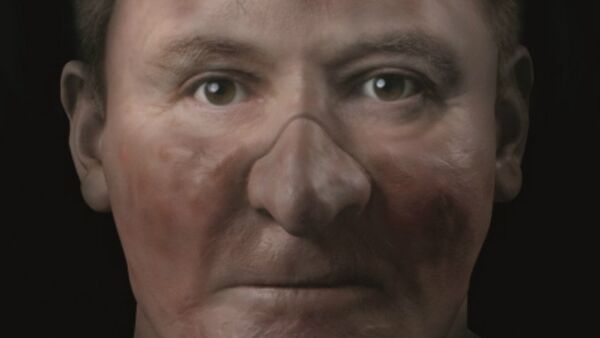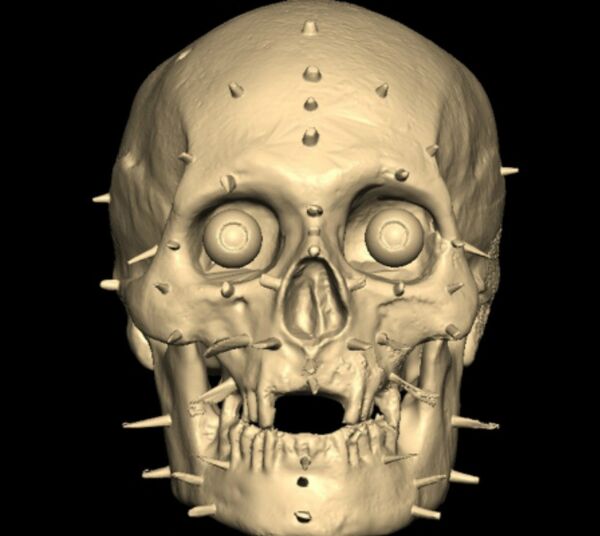The project was conducted via a joint effort by historians from the University of Glasgow and craniofacial experts from Liverpool John Moores University; the funding, some 5,000 British pounds, was provided by the University of Glasgow's Chancellor’s Fund.
Dr Martin MacGregor, a senior lecturer in Scottish history at the University of Glasgow and project lead, explained that he was inspired by the discovery of the skeleton of King Richard III of England found in 2012.
"The case of Richard III revealed how far the technology had advanced. I saw an opportunity to apply the technology to the Hunterian skull held here at Glasgow: first to test the credibility of its connection to Bruce, and then to try to add to our knowledge of Scotland’s greatest king," he said.
One of the images created by the research team “depicts the subject in his prime, a large and powerful male head that would have been supported by a muscular neck and stocky frame – a match for the super-athletes of today,” according to the Glasgow University official website.
Another image however reveals that "the skull exhibits likely signs of leprosy, disfiguring the upper jaw and nose", apparently confirming historical accounts claiming that Bruce was suffering from some sort of ailment, possibly leprosy, which eventually claimed his life.
"This is the most realistic appearance of Robert the Bruce to-date, based on all the skeletal and historical material available," Professor Caroline Wilkinson, Director of LJMU’s Face Lab and a world-renowned craniofacial identification expert who took part in the project, said.
No reliable depictions of Robert the Bruce were made during his time and other methods of recreating his likeness are compounded by the lack of his DNA samples.
King Robert I, also known as Robert the Bruce, was the ruler of the Scots from 1306 to 1329. One of the most prominent warriors of that time, he led Scotland during the First War of Scottish Independence against England, and is revered today as a national hero in Scotland.



